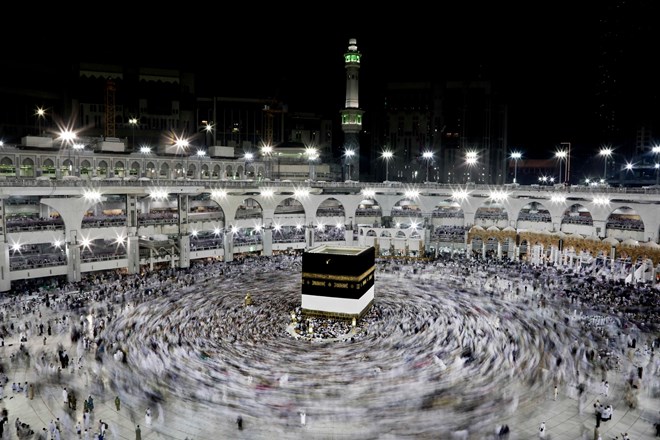

Mecca (QZ):- For almost 1400 years, Muslim pilgrims have boarded boats, saddled up camels, or set off on foot for Mecca. Today, they’re making the same journey, but an embrace of technology is making their visit faster, safer, and more efficient than ever.
The hajj, from the Arabic word for pilgrimage, takes place every year for five or six days of the last month of the Islamic calendar. This year’s event officially begins today (August 9), with over a million people already in place in the Saudi city.Ads By GoogleMaking this journey at some point in one’s life is one of the fundamental obligations of Islam—and one of its most arduous. But though the experience is often euphoric, it may come at a high cost. In India, Muslims enter a lottery, or pay as much as a third of the average annual salary to private tour operators for the experience. For American Muslims, costs may be upwards of $10,000. Then there are the risks: in recent years, overcrowding or other accidents have resulted in the deaths of hundreds. In 2015, at least 2,200 people died in a stampede.
For even the most modern cities, a sudden influx of two million visitors would present major logistical challenges. Here, many of the key sites are thousands of years old. Saudi Arabia, which pulls in $12 billion a year annually from hajj tourism, has therefore invested heavily to modernize the event and minimize crowding. With some Muslim leaders calling for a boycott of the hajj in light of Saudi political actions, the kingdom has every incentive for everything to go as smoothly as is physically possible.
Physical constraints on how many pilgrims Mecca can safely accommodate means that, under the status quo, it would take more than 580 years for every living Muslim to make the trip. To meet the Vision 2030 goal of ultimately playing host to 30 million annual pilgrims, or as much as 15 times the current total, by 2030, Saudi authorities are turning to technology.
This year, the first high-speed rail link between Mecca and Medina will cut eight hours off the journey by road. Once pilgrims arrive, a raft of smart initiatives, encompassing AI and the Internet of Things, are in place to connect them to medical care if they need it and keep tabs on the areas with the most crowding.
In one such pilot, some 25,000 pilgrims have been issued smart cards from the Ministry of Hajj and Umrah. This wearable tech is scanned as they move from location to location, while individual location trackers help service providers to give assistance as soon as it’s requested. For pilgrims themselves, a matching app shows the transportation schedule and which spots are the most crowded. People who do fall ill may be attended to by a robot physician, built to take patients’ temperature or check their pulse. These build on initiatives already in place, including an electronic early-warning system, created with the help of the World Health Organization, that sounds an alarm in the event of some kind of outbreak of disease.
Meanwhile, six transmitting stations with 350 sensors across Mina—the heart of the hajj route—are in place to gather data about which pilgrims are where, with HD cameras feeding information about the movements of crowds to a monitoring center. As yet, there’s no real backlash to the surveillance—perhaps in light of precisely the kind of crush-related tragedies it is seeking to prevent.
Not all of the initiatives are focused on keeping people safe. To support hajj tourism, a local bankhas issued so-called Hajj Bank cards, in an anti-theft measure that would allow pilgrims to deposit money on arrival. A “pilgrimage without a bag” program is encouraging pilgrims to travel light by transporting their luggage from wherever they are staying to the designated Hajj terminal at King Abdul Aziz International Airport.
By 2030, if all goes well, the hajj will be even smarter—and still more lucrative for a host country with already deep pockets.
more recommended stories
 President Irro’s Diplomatic Reset: A Bold Step Toward Somaliland’s Recognition
President Irro’s Diplomatic Reset: A Bold Step Toward Somaliland’s RecognitionBy Abdi Jama Hargeisa — The.
 Somaliland Pursues Peace: First POW Exchange with Puntland Completed
Somaliland Pursues Peace: First POW Exchange with Puntland CompletedPresident Irro’s Dialogue-Based Approach Gains Momentum.
 From 1960 to Today: Somaliland’s Unbroken Case for Statehood
From 1960 to Today: Somaliland’s Unbroken Case for StatehoodSomaliland’s Foreign Minister Reaffirms Sovereignty, Urges.
 Gogol or Goodbye? Somalia’s Last Opportunity for Federal Reconciliation
Gogol or Goodbye? Somalia’s Last Opportunity for Federal ReconciliationBy Abdirahsid Elmi & Mohamed Musa.

